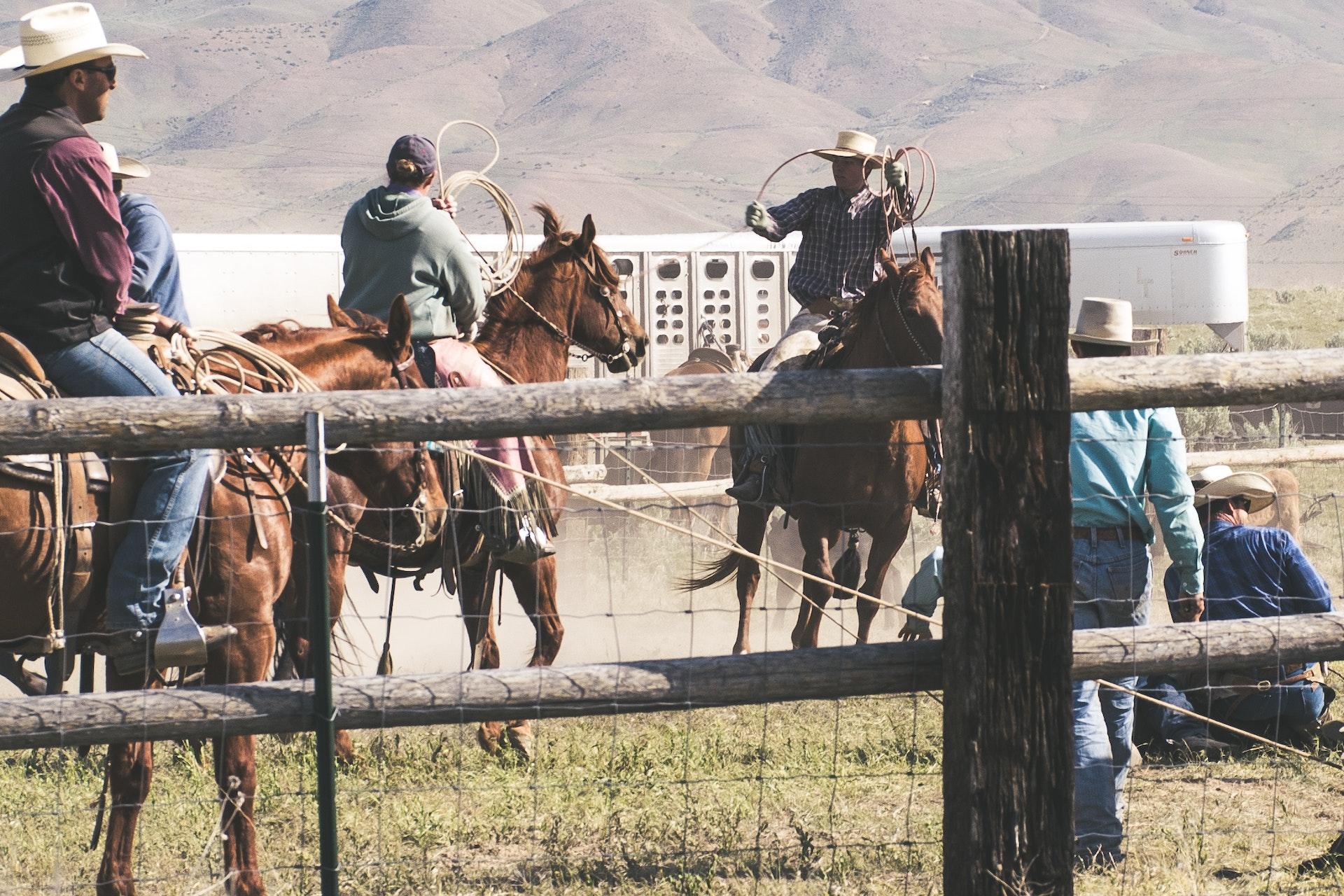Understanding Team Roping Communication
Understanding Effective Communication in Team Roping
In team roping, effective communication between partners is key to winning. It involves clear and concise instructions exchanged through nonverbal and verbal cues that allow for seamless collaboration in maneuvering cattle.
Using specific hand signals, verbal prompts or body language offer advantages like increased speed and precision when executed correctly. Understanding your partner’s style of communication can help you achieve better results.
Consider developing strategies practicing feedback methods and constantly improving on the minor details of teamwork required for successful collaborations during competition, such as clarity in timing, gestures, and vocal intonations.
Maximizing performance potential requires more than physical practice but constant communication reinforcement through video playback identifying areas of discordance and where improvements are needed.
As a team roper wanting to achieve their goals while keeping in mind the competitive nature of the sport, ensure communication consistency by placing an emphasis on its role on success throughout all phases of your practice and competition routine.
Communication with your team roping partner is key, but if all else fails, just shout random rodeo jargon at each other until something works.
Key Communication Strategies For Effective Team Roping
Effective Duo Dynamics in Team Roping
Team roping is a challenging sport that requires two individuals to work together using their unique skill sets. Efficient communication is critical for achieving success in this sport. Here are some strategies that can help you improve the way you communicate with your partner:
- Try to establish a clear understanding of your respective roles within the partnership. This could involve discussing each other’s strengths and weaknesses and determining who is best suited for which task.
- Maintaining open and constant communication throughout the event is important. Ensure that you are on the same page when it comes to timing, positioning and execution of movements.
Lastly, building trust between partners is also crucial for effective communication. Encourage transparency, whereby both parties offer feedback without fear of judgment or criticism.
For every team roper, it’s essential to remember that there’s no ‘I’ in team. In order to make sure everyone performs at their best ability, constant communication between partners should be second nature.
True Story: Laurel Walker Denton talks about her experience partnering with one of America’s most respected team ropers – JD Yates who has won several titles over the years. He shares how learning the language of rope enabled them to connect more deeply while communicating which led them to achieve great results as a duo.
Communication is key in team roping, just like remembering who bought the last round of beer.
Practice Drills for Effective Communication During Team Roping
Effective Communication Techniques for Successful Team Roping
To succeed in team roping, effective communication between partners is crucial. Here are five practice drills to improve communication techniques during team roping:
- Communication Signals: Establish clear signals for starting the run and stopping the steer.
- Pre-Run Huddle: Discuss tactics and strategies before commencing the run.
- Preset Role Play: Practice different lead chase positions with a predetermined role-play scenario.
- Switch-up Exercise: Alternate roles between partners to encourage active listening and trust-building.
- Silent Run: Communicate non-verbally by establishing eye contact, gestures, or head nods during a pre-planned silent run.
Effective communication can also be improved by creating a trusting atmosphere, being open to feedback, and acknowledging mistakes. Listening actively and clarifying doubts immediately can help prevent misunderstandings and miscommunication.
One successful method for improving communication involved creating a coded system through specific hand signals that allowed for instant recognition. When one partner recognized the signal meaning “change up,” the roles of header and heeler would switch.
I hope these techniques aid in facilitating your success as a team roper! Communication is key in team roping, but if you’re not careful, you might end up roping your partner’s patience instead.
Common Communication Mistakes and How to Avoid Them
Effective Communication Techniques to Improve Your Team Roping Performance
Mistakes in communication can impede success in the team roping event. Proper communication plays a pivotal role in ensuring that both partners are coordinated and well-prepared, allowing them to work together effectively and efficiently.
Some common communication missteps during team roping include failure to communicate at all, using vague language, not practicing enough beforehand, not reading your partner’s body language attentively, being too rigid about plans, and not having a contingency plan.
- To avoid failing to communicate entirely, establish communication beforehand.
- To avoid using unclear language phrases like ‘right here’, practice utilizing precise terminologies.
- To avoid lack of preparation in events, have several exercises before its occurrence.
- To avoid overlooking nonverbal cues from your partner, remain focused on how you exchange signals.
- To avoid being overly insistent with your plan without adjustments, always prepare for surprises.
- To avoid being caught off-guard with unforeseen circumstances, create backup plans and strategies for every contingency.
It is also crucial that you understand each other’s strengths and weaknesses. Failing to appreciate each other’s personality and technique will induce differences between partners that could harm their collaboration. Appreciating your partner can help improve teamwork as tensions are minimalized and collaboration maximized.
Ultimately, open lines of communication make all the difference. Strive to stay transparent even when there are mistakes or disagreements by keeping them positive.
Case in point: At a national level team roping event where partners had limited joint practice sessions due to COVID-19 restrictions during the competition season period while still maintaining social distance rules. As they began the 10-second ride countdown steps for entry into the ring padlock pen one rodeo cowboy yelled their cue off-hand as his partner was made ready in a defensive position, hence losing the rope’s rhythm. After that experience, they agreed on a deliberate and precise code in communication and practiced communicating accordingly for expectations on the object’s tension, which improved accuracy in their performances.
Trust is like a good rope – strong, dependable, and capable of handling any unexpected twists and turns in team roping communication.
Importance of Trust in Team Roping Communication
Effective Communication is essential to succeed in team roping. However, it often involves taking risks and relying on your partner’s strengths and judgment. Therefore, Trust plays a crucial role in Team Roping communication.
When roping, trust ensures that both partners understand each other’s roles and have open communication channels. It means trusting your partner to be honest with their skill level and expectations. Additionally, Trust ensures that you can handle criticism constructively without damaging the relationship or confidence in your abilities.
In Team Roping communication, trust is built by spending time practicing together and learning each other’s habits and preferences. It involves recognizing when your partner needs help or support during a run and acting accordingly. By developing trust, rope partners can build strong relationships based on respect, reliability, and support.
Pro Tip: Building trust takes time but is worth the effort! Always approach communication with respect for your partner’s skills and knowledge to foster mutual understanding.
Actions speak louder than words, unless your partner is a deaf horse.
Using Non-Verbal Communication for Effective Team Roping
Communication with your team-roping partner is essential, and non-verbal cues play a crucial role in successful performances. Through unconsciously relying upon visual body language, riders can direct their horses to navigate patterns accurately. Maintaining focus and awareness of their partner’s movements, the roper could then position themselves effectively for an efficient throw. The smallest of gestures like a subtle head nod or hand movement can clearly communicate the next move to be made without disrupting the flow.
Effective non-verbal communication takes into account not just using physical gestures but also having an understanding of your partner’s non-verbal language. Knowing when they are preparing to make a throw or adjust their positioning allows for adequate maneuvering by both parties without placing undue pressure or constraints on either rider. By establishing an effective rhythm and visual cues, a partnership that may produce impressive performances can emerge.
The most substantial advantage to non-verbal communication in team roping is illustrated when watching expert-level competitors execute seamless throws with instinctual ease; this only becomes possible with extensive practice and synchronization with their partners. Understanding how your teammate communicates through nuanced eye contact or body posture helps prevent confusion during high-stress moments that include cattle chasing and sudden course changes.
Two-time world champion team roper Rendon Paniagua shares that trust is paramount between partners while competing together. Rendon says teamwork involves trusting each other as much as the horses they are riding, “when [you’re] focusing your every fiber on what you need to do to execute [your] role perfectly combined with a deep level of mutual trust,” you stand the best chance of winning competitions and building lasting friendships with your teammates.
Team roping is all about communication, but sometimes it feels like we’re speaking two different languages – one of us is talking roping, the other is speaking gibberish.
Overcoming Communication Barriers in Team Roping Situations
Effective Communication in Team Roping: Exceeding Barriers
In team roping, communication is crucial for success. To overcome communication barriers, clear and concise communication is essential. While providing necessary information, keep the talk to a minimum as it distracts from the task requiring focused attention.
To communicate effectively with your partner in team roping, you must have a basic understanding of their comfort zones. Furthermore, non-verbal signals can play a vital role in communicating with your teammate. Shield yourself from external factors that may affect your concentration or lead to confusion.
Understanding each other’s strengths and faults add an extra level of cooperation and respect between partners. Effective communication will enable you both to modify your approach to meet evolving challenges in the game scenario.
Don’t let poor communication ruin a perfect run when it could be easily avoided by maintaining active conversation with your partner. When you succeed, share the moment together!
Brush up on your lasso language with these tips for refining your team roping communication skills.
Review and Refinement of Team Roping Communication Skills.
Professionals in team roping activity constantly strive to enhance their communication skills for seamless and efficient performance. Updated knowledge about semantic language processing techniques can help in refining the review of communication abilities. In this way, effective communication channels between team members can reduce errors and ensure successful collaboration during a roping event.
To communicate effectively with your partner(s) in team roping, it’s vital to practice active listening, clear verbal cues, and visible body movements. Additionally, using supportive words, praising your partner’s efforts, and keeping emotions under control can add value to your teamwork. The continuous improvement of these skills can help the team become more coordinated and efficient.
One essential aspect is maintaining calmness even during mistakes or miscalculations while roping since it affects the team dynamics and confidence level. Furthermore, developing confidence in each other’s skillset by practicing together regularly contributes to overall rapport building.


